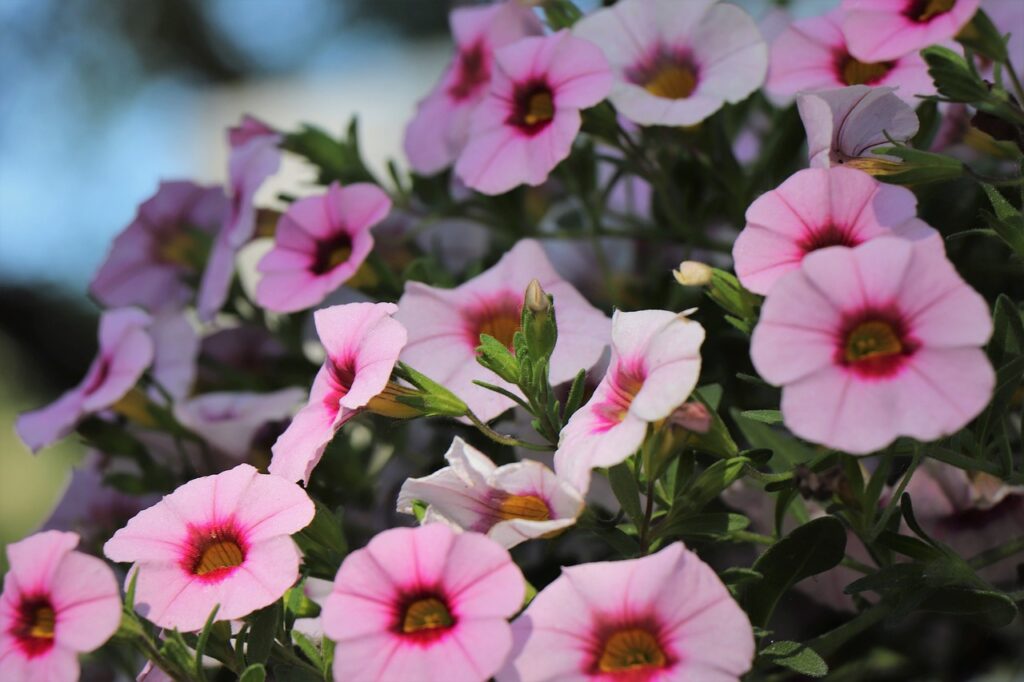Calibrachoa | A Pattern of Colors Woven by Tiny Flowers

Calibrachoa is a gardening plant known for its small bell-shaped flowers, its wide range of colors, and its long blooming season. Although it resembles petunias in appearance, it is more compact and robust, making it particularly suitable for pots and hanging baskets.
In this article, I will introduce the essential information about calibrachoa as well as tips on how to grow it successfully.
Basic Information
- Scientific name: Calibrachoa
- Family: Solanaceae (Nightshade family)
- Origin: South America (mainly Brazil)
- Appearance: Calibrachoa produces clusters of small flowers about 2–3 cm in diameter, available in red, pink, purple, yellow, white, orange, and many other colors. The leaves are small and bushy, giving the plant a full, voluminous look.
- Blooming season: From spring to autumn, continuously producing colorful flowers throughout the season.
Cultural Significance Around the World

Calibrachoa is widely cultivated as an ornamental plant and is especially popular in the United States and Europe. It is often used in pots, hanging baskets, and as ground cover, adding vibrant colors to gardens and terraces.
In Japan, its popularity has also grown in recent years due to its easy cultivation and colorful blooms.
Thanks to extensive breeding, calibrachoa is loved under the nickname “Million Bells,” symbolizing abundance and happiness.
Historical Background
Calibrachoa is a relatively new ornamental plant, with its history beginning in the 1990s. Originally native to tropical regions of South America such as Brazil, it attracted attention from gardening enthusiasts because of its resemblance to petunias.
Initially classified as part of the petunia family, molecular genetics later confirmed that it belongs to a separate genus, Calibrachoa. Since then, its tolerance to humidity and cold has been recognized, and it quickly gained popularity in the gardening market.
The creation of the “Million Bells” variety marked a turning point, spreading calibrachoa to home gardens and leading to the development of numerous hybrid varieties.
Gardening Advice

Calibrachoa thrives in sunny locations. When sunlight is insufficient, blooming decreases, so it is important to ensure plenty of light.
It prefers well-drained yet moisture-retentive soil. Water moderately—enough when the surface soil dries. While it is tolerant of drought, it is sensitive to excess moisture, so avoid overwatering.
Fertilize about once a month with a liquid fertilizer rich in phosphorus to encourage abundant flowering. Pruning overgrown stems will maintain a neat appearance and promote new blooms.
Conclusion
With its charming appearance and wide range of colors, calibrachoa is perfect for brightening up gardens and balconies. As long as sunlight and drainage are well managed, even beginners can enjoy long-lasting flowers.
I encourage you to try growing calibrachoa in pots or hanging baskets and enjoy the beauty of its colorful blossoms.




